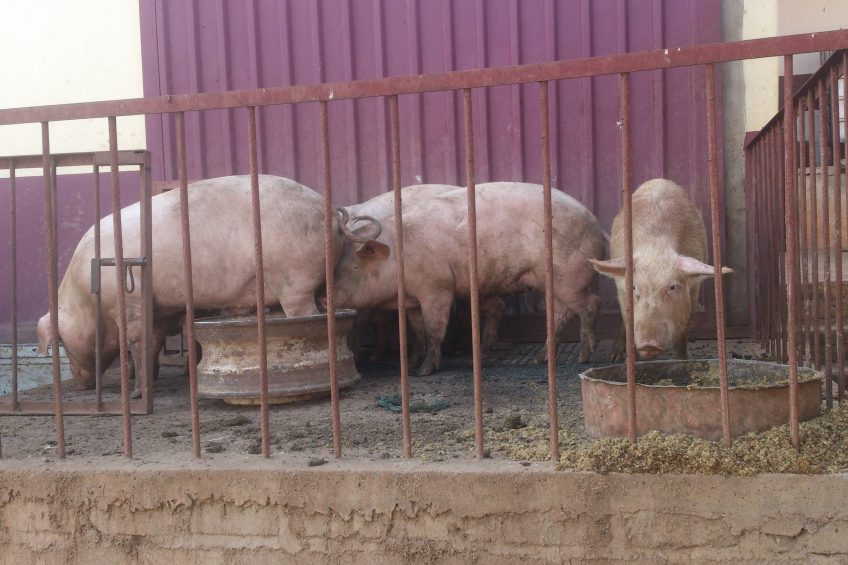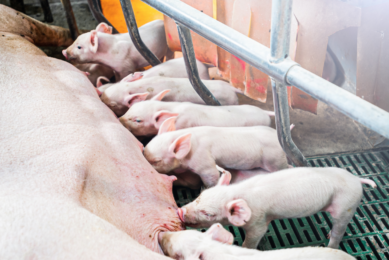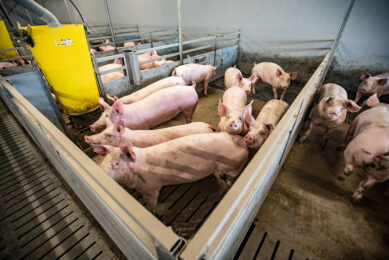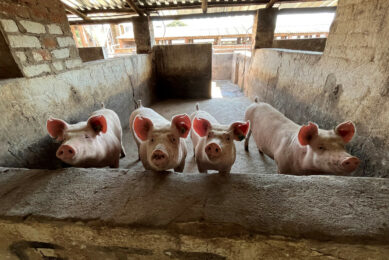Malawi’s pig business takes a sudden jump

Malawi’s agriculture has long been heavily dependent on tobacco cultivation. Recently, in an attempt to diversify, pig production has been on the rise as well. Despite encouraging steps, there is still a long way to go.
Tobacco – and then a long time nothing. That is what the agricultural market looked like for many years in mid-African country Malawi. In times of prosperity, the country could export a lot; in times of bad crops and adverse weather, however, this one-sided emphasis led to malnutrition and poverty. In recent years, there have been first steps to change the country’s focus – and in the process of diversification, pigs have been playing a role as well.
|
Malawi’s pig production statistics
Take a look at the figures in a 2008 livestock survey, which reported a modest growth of the country’s pig inventory from 481,000 pigs in 1997 to 1.23 million just over 10 years later. At the time, pigs were the third largest livestock population in Malawi after chickens (44 million) and goats (3.1 million).
Fast forward to 2014/2015 – then the total pig inventory of Malawi suddenly shot up to be at 3.65 million pigs – to put things into perspective: that is roughly comparable to the pig herd in e.g. Austria. These figures were calculated by a team of researchers of the Lilongwe University of Agriculture and Natural Resources, in the country’s capital. The trend of strong growth is correct, even year-on-year, a 16.53% growth was noted, as in 2013/2014 the pig inventory in Malawi stood at 3.13 million.
Pork consumption
In terms of consumption, pork now ranks as the country’s second highest earner for farmers in livestock production, which traditionally was dominated by cattle and goats. Pigs are now constituting an important segment of Malawi’s agriculture: it contributes about 7% of the total GDP and about 20% of the value of total agricultural production.
Factors for growth
So why does Malawi seem to have suddenly discovered pig production in recent years?
- First of all, in the background, there is demographics and economic prosperity. Population increase in the country stands at roughly 3% per annum, which has been leading to increased urbanisation and an increased household income that induces demand for livestock products, as already noted in a report by the National Statistical Office (NSO) in 2008.
- The key drivers to growth in livestock populations are attributed to increased involvement of non-governmental organisations (NGOs) in implementing livestock projects which has increased the number of players in livestock development.
- In addition, the recognition has grown to see livestock as a tool to alleviate poverty, diversify income, and for enhancing food security within rural growth sector. Take for instance the ‘Malawi Growth and Development Strategy’, an overarching government policy for poverty reduction and sustainable economic growth in the country. Agribusiness like pig production is one of the priorities for the central government to achieve these goals. Pig production can be complementary to other incomes for families in the country – traditionally many rural women would complement their incomes this way.
- In addition, the Malawi government has recently been encouraging pig farmers to form cooperatives to improve bargaining power, reduce costs, tap into better extension services, enhance quality of piggery products and link themselves to high value markets for high productivity and profitability.

Different production systems
Pig production in Malawi can roughly be divided in to 3 different kinds of systems, which are all being applied:
- Just under 12% of the total pig production – higher when calculated in terms of output – would classify as intensive production systems. This type of producing is entirely commercial, uses – from a Malawi perspective – exotic breeds like Large White and Landrace, feeds prepared rations and decent water and follows good practices for herd health and management.
- Medium input production and low input production systems are however the most commonly found methods. In the medium input production systems, pig breeds are basically Landrace, Large White and crosses with indigenous species. These pigs are housed full time. Feed may consist of commercial rations, home-made rations, house refuse and industrial wastes. Pigs may be kept part of their life in paddocks often with access to grazing. Balanced concentrates may be fed at times. The pigs are brought indoors for farrowing, rearing and finishing to slaughter.
- Lastly, low input production systems (also known as free-range systems) consist basically of indigenous breeds and are only occasionally housed. The animals are generally on free-range scavenging system. Interestingly, these contribute over 50% of all pork consumed in Malawi.
In these systems, pigs roam at liberty and scavenge much of their feed. They are confined in huts at times and may be fed on swill, crop residues and banana chops. A system that is not recommended due to its high risk of (zoonotic) diseases, it is the type which is largely practised in the country.
In the latter 2 systems, usually the number of sows is only limited (1 or 2), and many farmers are not trained in key aspects of pig farming like heat detection, pricing, feed formulation and business management. As a result, productivity is low and capital inadequate.
Progress
Timothy Gondwe, researcher at Lilongwe University and one of the scientists behind the recent production figures, also notes the progress that has been made towards livestock development in Malawi, especially from 2003 following the development of a National Livestock Strategy (2003) and from 2006, following development of National Livestock Policy.
Nevertheless, he remains critical, saying: “Despite the increase in production by numbers, the increase in production does not match the demand for livestock products.” He adds that the government often faces implementation challenges of its policies, leading to competition between crop and livestock sectors instead of complementarity.
With permission, this article has been adapted from a publication in the German pig magazine DLZ Primus Schwein.


 Malawi at a glance
Malawi at a glance








